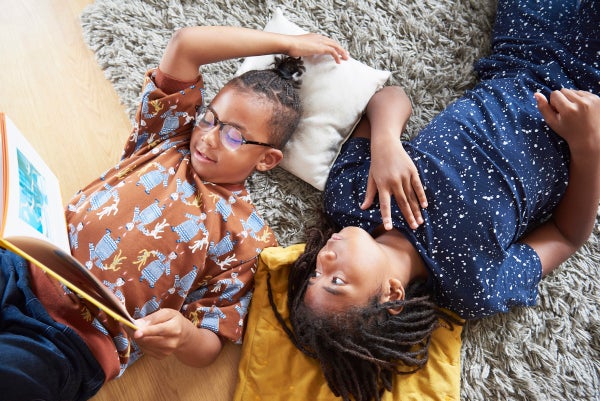The pandemic saw an increased demand for stories that excite children in new ways as well as support them in processing difficult emotions. The attributes of personalized books fit this need well: with personalized Loss Books, children read about losing a family member. With the personalized Me and My Pet Book, children read about how they first met their dog or cat. Identified as the main driver of the rapidly growing interactive children's book market, personalized books are far from a gimmick.
For the uninitiated, personalized books are print or digital books that have been tailored to a specific child. They come with various levels of adjustment options and interactivity, but all follow a simple formula: the publisher provides the users with a template, which parents populate with children’s data. With I See Me personalized books, the caregiver selects the character’s name, gender, hair color and skin tone, and inserts the child’s date of birth and photograph into a predesigned story. With a few clicks, it is not Cinderella but Natalia who experiences distress and marries the prince charming. Thanks to the advanced print-on-demand possibilities of small-scale publishers, it is not difficult to create a personal(ized) version of any generic story. The personalized book publishers claim that their books teach children empathy, boost their self-esteem and encourage love for reading. Now, you might think that, surely, that is what all parents and teachers want, so should we swap all books for personalized stories?
PERSONALIZED LEARNING POTENTIAL
On supporting science journalism
If you're enjoying this article, consider supporting our award-winning journalism by subscribing. By purchasing a subscription you are helping to ensure the future of impactful stories about the discoveries and ideas shaping our world today.
We know from decades of research on traditional children’s books that children learn from stories that stimulate abstract thinking and perspective-taking. But personalized books do the opposite: they engage young readers through familiarity and children’s natural interest in self. While personal stories are often used in therapeutic practice or with children with special educational needs, personalized stories are a new genre, raising many open questions.
Publishers’ use of children’s dates of birth or photos, and the periodic reports of misused children’s personal data by various companies, behoove researchers to ask ethical questions. Of no less importance are moral questions concerning diversity: squeezing children’s diverse personalities into gender and ethnicity categories makes one wonder how “personalized” the books actually are. The question that colleagues and I have been asking in the past 10 years was whether and how children might learn with personalized books.
Our observational studies confirmed publishers’ claims that children are highly engaged and motivated to read personalized books, especially if the child was involved in the book production process. The learning potential of personalized books lies in capitalizing on readers’ motivation to advance their knowledge with each personalized book. Some small-scale publishers begin to develop products that center on this potential: the MyLib personalized book series, for example, is designed to teach children early literacy principles with a personalized story.
In an experiment comparing personalized books with nonpersonalized print books, we found that reading personalized books was related to higher learning rates of new words included in the books. However, we found no difference in children’s word learning when we compared digital books that contained personalized and nonpersonalized sections. As for the process of reading, children talked mostly about their own feelings and experiences when reading personalized books, while their parents talked more about other story characters, possibly as an attempt to balance the story discussions.
In a recent experiment, Kruse and colleagues compared children’s understanding of the moral of a story and its application to their lives after they read a personalized, nonpersonalized or control story. Although children who read the personalized stories had more detailed retellings, there was no difference between the three groups. This could be because there was no difference or because the variability among the children was higher than the effect of personalization. The studies with personalized books are too few for us to know for sure.
Given the increased focus on personalized learning in the pandemic, and the need to customize children’s reading experiences, there is every reason to believe that the rising trend in personalized books will continue. This is likely to draw more researchers into the area and expand it to exciting areas, including animal-assisted reading.
WHAT WORKS?
Whether personalized books are paper-based or created with latest technologies, adults’ and children’s direct involvement in the books’ production is key to their engagement and conversation around the book. Self-made personalized books connect parents and children with a shared reading joy, and link children with special needs with their caregivers in their classrooms. Teachers and preservice teachers can tailor popular titles to make them more appropriate to multicultural classroom settings using digital books or virtual reality.
The other key learning point lies in directing children’s self-focus towards the other. That is a tall order for books overall, and personalized books in particular. For future educational purposes, it is crucial to strike the optimal balance between personalization and depersonalization. For example, could children’s names and pictures be used to motivate children to read radically impersonal texts, such as nonfiction texts? In a globalized and divided society, could personalized books be used to address the moral failings that arise from too much focus on self and too little on the other?
This is an opinion and analysis article; the views expressed by the author or authors are not necessarily those of Scientific American.
